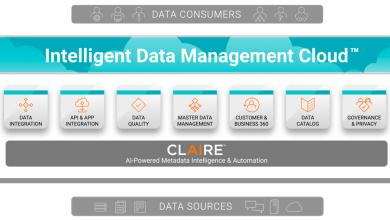Can Cloud Repatriation Help or Hurt? Weighing the Pros and Cons for Enterprises

Tech vendors tend to paint a picture of a cloud-first world, but are businesses really leaving their on-premises setups behind for good? Recent trends indicate that the answer might be more complex.
Cloud repatriation has become quite a pertinent topic in recent days. It’s a trend that has been looming over the heads of businesses since the initial excitement of cloud migration has waned and the realities of managing cloud infrastructure come into sharper focus.
However, as enterprises navigate the evolving landscape of cloud computing, the question arises; is bringing data back to on-premises a strategic move or a costly misstep?
The Allure of Cloud Repatriation: Pros That Can’t Be Ignored
As cloud computing becomes a heating topic of discussion, some organisations are beginning to rethink their strategies. While the cloud offers scalability and flexibility, it isn’t always the most cost-effective or secure option for every workload. This has led to a growing interest in cloud repatriation, where businesses move data and applications back to on-premises environments or private data centres. But what drives this trend?
Enhanced Data Security and Control

One of the most significant drivers of cloud repatriation is the potential for enhanced data security. By moving data back on-premises, organisations can exert tighter control over their data, reducing the risk of breaches and ensuring compliance with local regulations. For example, regulatory frameworks like the General Data Protection Regulation (GDPR) impose strict requirements on data handling, which can easily be more managed in a private environment compared to relying on external parties.
Clement Lee, Security Architect APAC at Check Point Software Technologies, points out that regulatory requirements are a major factor in influencing cloud repatriation. Organisations may need tighter control over their data to comply with laws like the Personal Data Protection Act (PDPA), making repatriation an attractive option for them to watch over their sensitive information in a much closer observation.
Cost Savings for Stable Workloads

Cost implications are another compelling reason to consider cloud repatriation. While public clouds offer scalability and a pay-as-you-go model, these cumulative costs can mount like a skyscraper, especially for businesses that produce a monstrous number of workloads. Sandeep Bhargava, SVP of Global Services & Solutions at Rackspace Technology, notes that many businesses are moving workloads back to private environments to avoid the high maintenance costs and security concerns associated with public clouds.
Scott Shaw, CTO of APAC at Thoughtworks, echoes this sentiment, explaining that businesses with stable workloads can minimise infrastructure costs over the long run by hosting them themselves. He adds that cost should not be the sole factor in moving to the cloud, but for certain workloads, repatriation might make more financial sense!
Customisation and Operational Efficiency
Cloud repatriation also offers the flexibility to implement solutions tailored to specific business needs. Without constraints that may be imposed by public cloud providers, companies can customise their infrastructure to meet precise operational requirements. Clement Lee mentions that the rigid structures of cloud environments can sometimes hinder operational efficiency, prompting organisations to consider repatriation to implement bespoke solutions.
In essence, by bringing workloads back on-premises, businesses gain more freedom to optimise their systems without the limitations imposed by cloud providers. This can lead to more streamlined operations, as infrastructure is tailored directly to the organisation’s unique processes and goals!
The Hidden Costs the Cloud Repatriation: The Obstacles Underneath
While the benefits of cloud repatriation can be compelling, one must acknowledge the several flies in the ointment. Transitioning from a cloud-based environment back to on-premises infrastructure involves significant challenges that can catch organisations off guard if not carefully planned.
High Initial Costs and Complexity
One of the most significant obstacles is the high initial cost of setting up an on-premises data centre. This includes substantial capital expenditures (CAPEX) for hardware, software, and the specialised talent required to manage and maintain the infrastructure. For small and medium-sized enterprises (SMEs), these upfront costs can feel like acquiring a golden mansion with a measly pocketful of paper clips.
Moreover, the process of repatriation is technically complex and requires meticulous planning. Any misstep during the transition can lead to operational disruptions, data loss, or compliance issues. Bhargava emphasises that the process can be time-consuming and may result in potential downtime, which can be particularly detrimental for businesses that rely on continuous access to their data and applications.
Ongoing Maintenance and Operational Costs

If you think the transition is the most challenging part, then you better wish there’s a better pill to swallow. After bringing all our workload back to our desks, what then?
Maintaining an on-premises infrastructure requires consistent investment in updates, scaling, and operations. Over time, these operational expenses (OPEX) can become burdensome, especially for businesses that lack the necessary in-house talent to manage their infrastructure. Shaw warns that while repatriating might reduce some costs, it could increase others, making the total cost of ownership potentially higher than staying with public cloud services.
Shaw also highlights the need to evaluate infrastructure needs on a workload-by-workload basis. For some applications, cloud hosting will always be an attractive option, but for others where capacity is steady and predictable, a different kind of outsourcing arrangement involving service partners and colocation facilities might be more appropriate.
The Irresistible Force Paradox: Weighing the Double-Edged Sword
Cloud repatriation presents both opportunities and challenges for enterprises. So which angle can we really take from here? Which is better, and which is worse? The truth is, it’s all in your hands and head to decide what’s best.
Think of it like a game of chess – every move you make will influence the outcome. Whether advancing your Queen and Bishop early by moving to the cloud, or retreating with a defensive strategy by repatriating, the key is to manage your assets wisely and anticipate the consequences.
Juggling between the pros and the cons is for you to ponder what fits your business’s current condition best. As we’ve gathered the minds of a few industry experts in this article, now you can assess yourself – do you really need to bring back your workload on-premises, or remain with cloud provider services?




